This Wednesday the Pole Barn Guru answers reader questions about best time to fill in uneven grade, best method to insulate walls with no housewrap, and addition of gable vents to help with condensation.
DEAR POLE BARN GURU: Maybe you can give some advice on our pole barn build. Our rat board is 6ft above ground, we were told the leveling would be after structure was erected. Should we build wall with cinder blocks or just fill fill fill? CATHY in ST. LOUIS
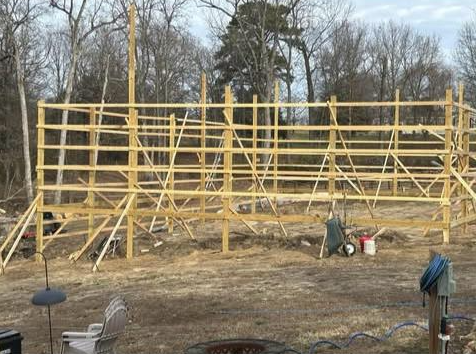
DEAR CATHY: It would have been so much easier to fill before construction started as it is now going to be a challenge to properly compact your fill whether you have a block wall between columns or not. If you do use a block wall, it will need to have a poured footing at or below frost line and be engineered to withstand the weight of the fill being placed against it. Ultimately it is probably most economical to fill, fill, fill (make sure to have it properly compacted no less often than every six inches.
DEAR POLE BARN GURU: I just built a pole barn garage. The builder used double bubble under the steel roof and also blew in R38 above the steel ceiling. I will be insulating the walls myself. Unfortunately I did not add house wrap under the steel siding. Would it be an issue if I used a thin foam board between the girts properly sealed and taped to act as my WRB, installed directly against the steel. Then use R-19 fiberglass batts over the foam board for the main insulation. I already have 14 rolls of the fiberglass insulation, so I would prefer to use it vs going in a different direction. Also, should I or should I not add a 6mil vapor barrier over the fiberglass? Any help would be appreciated! GREG in SLATINGTON
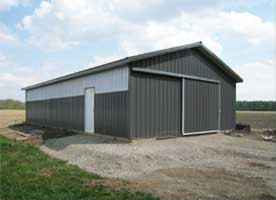
DEAR GREG: if you place properly sealed insulation boards between your wall girts, then you need to use unfaced batts with no internal vapor barrier (ideally Rockwool). Otherwise, you will be trapping moisture between two vapor barriers. If doing as you propose, it may be necessary to mechanically dehumidify your interior.
DEAR POLE BARN GURU: I have a 50×100 cold storage building that condensates like crazy on the ceiling. It currently has ridge vents, but no soffit vents as it does not have an overhang. I was wondering if gable vents would help to alleviate the issue and what size would be needed? JACOB in LESTER PRAIRIE
DEAR JACOB: Adding air intakes may help, but are not a guarantee of being a fix. You would need to add 1200 square inches of NFVA (Net Free Ventilating Area) in air intake, in order for your exhaust (ridge) vents to adequately function.
You should look at your source of moisture. Assuming you have a concrete slab on grade, if it does not have a vapor barrier underneath, it needs to be sealed. Make sure gutter downspouts discharge water at least 10 feet away from building. Exterior needs to be graded away from building at least 5% for this same 10 feet.
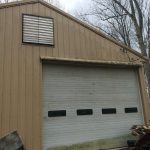 Reader BOB in GRAHAM writes: “I have a 40 x 60 pole building. There is a ridge vent along the 60′. I recently installed Sheetrock on the ceiling and blew in insulation. My question is what size fresh air intake vents do they need to keep the attic cooler. I was thinking I need Air vents on each side of the end wall at the lowest points. The other thing is I can only pull fresh air in at one end of the building. As the other end is open to the ridge vent, separate from the other 60′. Should I put an electric intake fan rather than just an air vent?”
Reader BOB in GRAHAM writes: “I have a 40 x 60 pole building. There is a ridge vent along the 60′. I recently installed Sheetrock on the ceiling and blew in insulation. My question is what size fresh air intake vents do they need to keep the attic cooler. I was thinking I need Air vents on each side of the end wall at the lowest points. The other thing is I can only pull fresh air in at one end of the building. As the other end is open to the ridge vent, separate from the other 60′. Should I put an electric intake fan rather than just an air vent?” 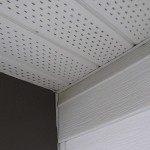 Your 40 x 60 building would therefore require at least eight square feet ( 40 x 60 = 2400 / 300 ) or 1152 square inches of NFVA, with at least 50% of this been at eaves (vented sidewall soffits) or gable vents located in lower half of attic space.
Your 40 x 60 building would therefore require at least eight square feet ( 40 x 60 = 2400 / 300 ) or 1152 square inches of NFVA, with at least 50% of this been at eaves (vented sidewall soffits) or gable vents located in lower half of attic space.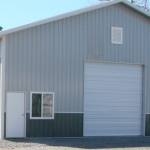 Last questions. I found a 36×36 square gable vent that has a NFVA of 585. I need 576 on both sides of my building so this vent should be sufficient, correct? Also, with me using the 1/300 ventilation rule the gable vent company who has this vent recommended using a vapor barrier in the attic too. I believe he said that it needs to be no more than 1 perm and to install it on the warm side of the attic. He said this is needed because I’m not using the 1/150 rule. He said if I have 16 sq ft on ventilation instead of 8 I wouldn’t need a vapor barrier. That’s not really an option though. That many gable vents wouldn’t look good. So what do you think? Do I really need a vapor barrier using the 1/300 rule? My roof panels have a felt-like material on the underside of them that I believe is called “drip x”. I was under the impression that this was a vapor barrier and when warm air rises and hits those cold roof panels the “drip x” keeps it from condensing. Do I really need a vapor barrier along the warm side of the attic too? That sounds like overkill to me but I want to do it right too. The plan is to fully finish the inside of my outbuilding eventually with a ceiling that will be white ribbed panels with a r-38 blown in fiberglass. I only plan on heating the building to about 55-60 degrees and that’s only if I’m out there working. The thermostat will be set to 45-50 if I’m not out there. Also, this outbuilding doesn’t currently have air conditioning but I may consider adding it down the road. You’ve been a big help so far. Thank you and I look forward to your response. “
Last questions. I found a 36×36 square gable vent that has a NFVA of 585. I need 576 on both sides of my building so this vent should be sufficient, correct? Also, with me using the 1/300 ventilation rule the gable vent company who has this vent recommended using a vapor barrier in the attic too. I believe he said that it needs to be no more than 1 perm and to install it on the warm side of the attic. He said this is needed because I’m not using the 1/150 rule. He said if I have 16 sq ft on ventilation instead of 8 I wouldn’t need a vapor barrier. That’s not really an option though. That many gable vents wouldn’t look good. So what do you think? Do I really need a vapor barrier using the 1/300 rule? My roof panels have a felt-like material on the underside of them that I believe is called “drip x”. I was under the impression that this was a vapor barrier and when warm air rises and hits those cold roof panels the “drip x” keeps it from condensing. Do I really need a vapor barrier along the warm side of the attic too? That sounds like overkill to me but I want to do it right too. The plan is to fully finish the inside of my outbuilding eventually with a ceiling that will be white ribbed panels with a r-38 blown in fiberglass. I only plan on heating the building to about 55-60 degrees and that’s only if I’m out there working. The thermostat will be set to 45-50 if I’m not out there. Also, this outbuilding doesn’t currently have air conditioning but I may consider adding it down the road. You’ve been a big help so far. Thank you and I look forward to your response. “





